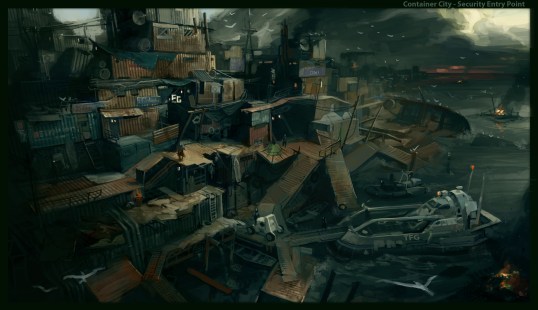In some cases, that means players doing things that don’t fit their fictional motivation, and nine times out of ten that dissonance is hilarious. There’s a rich vein of silliness in online games: players know that they’re playing a game, yet they become fully immersed in their environments and decisions. That kind of ironic oddness is part and parcel of the game, not an interruption of it. The real story of Brink isn’t the game’s plot; it’s the story of the player playing the game and the sum of those player-authored experiences that may be entirely unique to them. They’re even better when they’re collaborative, co-authored, and impossible to re-create: “Oh man, you remember that time I was trying to disarm that HE Charge, but then an Operative on our team threw an EMP grenade which slowed the charge’s countdown, but then Joe on the other team headshot me, but you revived me, then he shot you and I shot him and you killed him with your last bullet and I disarmed the charge with a second to go.” We want Brink to keep on giving players those kind of watercooler moments, even long after they’ve finished the storyline campaigns.
The apocalypse is such a staple in genre fiction and especially in video games. What are you guys at Splash Damage trying to do differently with Brink‘s broken-down future?
Brink’s post-apocalyptic setting has to do several things for us: it has to be set somewhere players haven’t been before and show them something they haven’t seen; it has to inspire our character and environment artists and level designers and offer a wide variety of environmental contrasts; it has to suggest cool map, objective and gameplay ideas; it has to be a place we have the team and tech to build, and that the PS3 and Xbox 360 and PC hardware can render; it has to be an environment that can narrate itself and explain why the factions are fighting, and why they don’t just leave. If we’re lucky it also provides us with a striking and varied colour palette, and some instantly memorable and recognizable landmarks players can use to locate and orient themselves. All this seems to require scarcity and isolation.
Also, “post-apocalyptic” doesn’t necessarily mean “gray.” Brink brings colorful environments back to shooters in a big way, and makes the vivid palette memorable and significant; if you’re in an area of the Ark that’s bright white, you’re in one of the tonier original districts made from Arkoral, the Ark’s patented construction material derived from a genetically modified coral. But as you go further downwind, to the bits of the Ark they had to build in a hurry from cannibalized ship steel for the tens of thousands of refugees who reached the Ark while fleeing rising sea levels, it gets more brown and dirtier until the Guest slums are bright red with rust, ready to fall apart and into the sea. Add all the colors of the sea and sky at various times of day and night, and Brink looks like no other game.
(More on TIME.com: Latest PS3 Firmware Update Blocks “Call of Duty” Hackers)
Usually, it happens the other way, but has there been an instance of getting a plot idea from something the art team has worked up?
It’s definitely a two-way street. The backstory leads the environment and gameplay, but sometimes it’s the other way round. Certainly our focus on evolving player movement with the SMART (Smooth Movement Across Random Terrain) system required certain routes, objects and obstacles, and our push towards deep player customization has had a pretty direct influence on how Brink’s world works. You see a concept image and know “this absolutely has to be in the game, so how does it fit in and what’s the reason for it?” Sometimes reverse-engineering the world and plotline to fit an image or gameplay constraint actually works out better than the original storyline.


